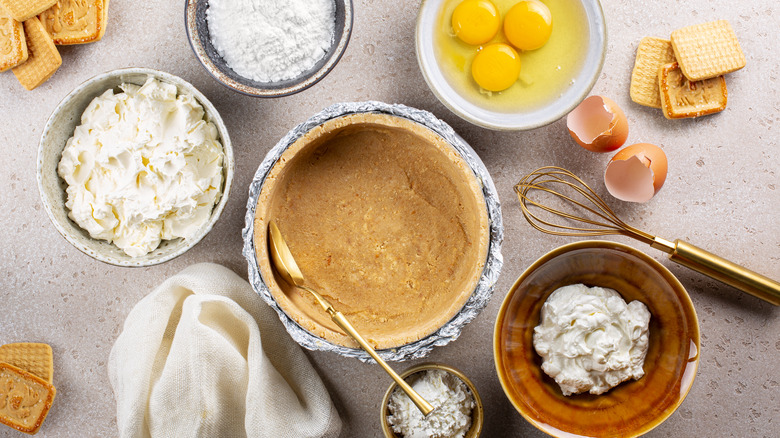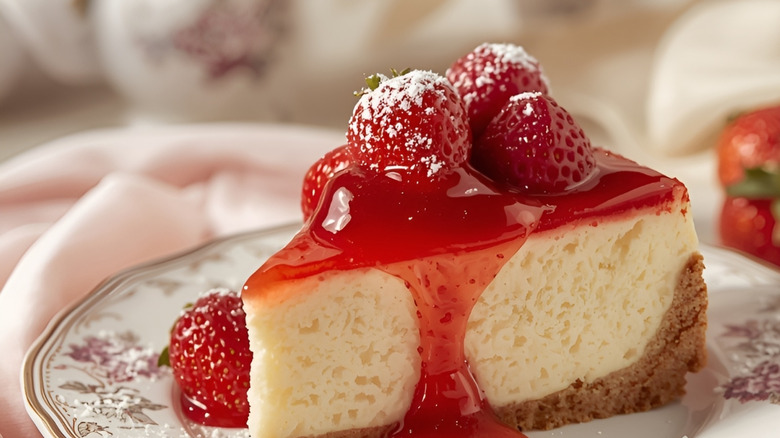The Reason Your Cheesecake Ingredients Should Be At Room Temperature
Whether you define cheesecake as a pie, a cake, or something else, the dessert is a delicious indulgence that many can't get enough of. If you are making a no-bake or a traditionally baked cheesecake, bringing the ingredients to room temperature before incorporating them will yield the best results. If you've ever whipped up a homemade cheesecake and noticed some grittiness in the texture, the temperature of your cream cheese was likely the culprit.
That's because if you mix in the ingredient straight from the refrigerator, it's too solid to incorporate smoothly. If you want your final product to be silky instead of gritty, bring the cream cheese to room temperature before mixing it in. The same holds true for other desserts that have a cream cheese layer, like ube cheesecake brownies.
It's also important to bring the other ingredients to room temperature, otherwise they could chill the cream cheese and firm it back up again. The best rule of thumb is to remove your ingredients from the fridge one to two hours before you start assembling the dessert to get them to that sweet spot of between 68 and 72 degrees Fahrenheit. Don't leave out things like the eggs and cream cheese for any longer than two hours, though, for food safety reasons. Butter, on the other hand, can sit out on the counter for a couple of days without issue.
Why it matters, and some room temperature shortcuts
You may be tempted to skip the room temperature step — but you shouldn't. Plain and simple, doing so will affect your results. Chilled ingredients simply don't combine well, resulting in textures and densities that aren't what you're looking for in a dessert meant to be light and airy. A well-combined mixture captures air, which expands in the heat of the oven to lighten up your cheesecake (as opposed to the dense result you'll get with poorly blended ingredients combined cold).
If your prep window is limited — or you simply forgot to set out your cheesecake fixings and don't want to wait — there are some other ways to take the chill off the components. To speed up the warming process, cut elements like the cream cheese and butter into cubes. This reduces the surface area on the ingredients, which significantly lessens the time needed to come to room temperature. You can also create shreds with a cheese grater or vegetable peeler for smaller bits that will warm more quickly.
Beware of the temptation to use the microwave. While it can definitely be done, it needs to happen in a few short bursts to ensure the ingredients are only softened, not melted. Submerging ingredients in a bowl of warm water is another way to quickly soften solid ingredients like cream cheese and butter. Warm water works to bring eggs to room temp, too. But, again, just make sure it's not so hot that it begins cooking them.


